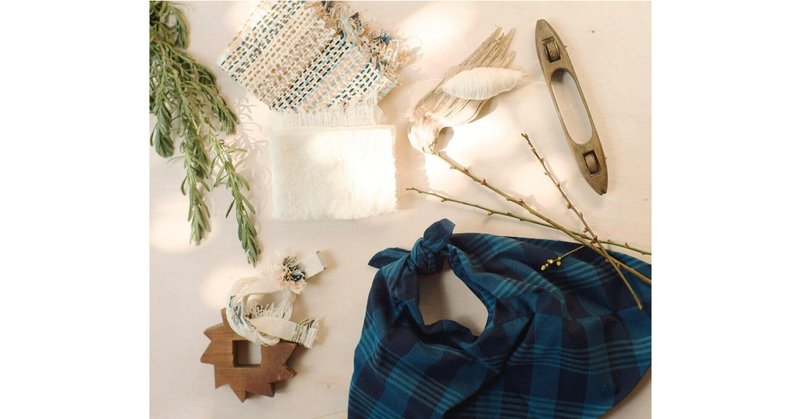
NPO法人おりもんや NPO Orimonya| 染織 Textiles| 鳥取県米子市 Yonago City, Tottori Prefecture
NPO法人おりもんや
鳥取県米子市にある、障害のある方の働く場所です。
織物の素材は木綿が中心で、紡績の糸を使用して手織りをしていますが、綿の栽培から糸を紡ぎ織ることにも力を入れていて、今後伸ばしていきたいと思っています。
一枚の布が完成するまでには、単純なものから複雑なものまで、さまざまな作業工程があり、誰もが個性を生かした仕事に携わっています。
そして、織物がひとつの作品として生まれてくる過程を通して、一人ひとりが仕事の担い手となって、協力し合う関係を築いていくことを、私たちは目指しています。
NPO Orimonya
Orimonya is a job center for people with disabilities in Yonago City, Tottori Prefecture.
We make original textiles mainly from hand-spun cotton. Not only do we hand-spin cotton, but we also grow it. We hope to bring full circle the process of growing, spinning, and weaving cotton.
Considering each person's unique abilities and the simple to complex tasks involved, we match people to the work that suits them. We aim to create an environment where each textile is birthed out of cooperation and inclusiveness.
おりもんやの仕事
伯州綿の無農薬栽培
ここ米子から境港にかけての弓ヶ浜半島で昔から盛んであった伯州綿を栽培しています。綿の性質として繊維は太くて短いが弾力があります。(布団綿として珍重されていました)
この綿の種取りをして糸車を使い糸を紡ぎ、織りに使用します。
Orimonya's Work
Pesticide-free cultivation of hakushu cotton.
We grow hakushu cotton, which has been cultivated along the Yumigahama Peninsula from Yonago City to Sakaiminato for a long time. Cotton fibers are thick and short but have elasticity (making it a sought-after material for futons). We pick this cotton, spin the thread, and then use it to weave textiles.
草木染
紡績の糸や手紡ぎ糸を染めます。染料は地元にある植物を採取し、煮出して染めます。
(桜、梅、枇杷、メガルカヤ、けやき、ヤシャブシ、ミモザ他)
Plant Dyes
We dye hand-spun and machine-spun yarn. We collect local plants, boil them, and use them as dyes (cherry blossoms, plums, loquats, kangaroo grass, zelkova, alder, mimosa, etc.).
刺し子
紡績糸を草木染した糸を使用し、伝統的な柄の他、個性を生かした色や柄の刺し子も行います。
Sashiko Embroidery
In addition to traditional sashiko, artists create original color arrangements and designs using thread dyed with natural plants.
織り機
この地方に伝わる高機を受け継いで使っています。
Loom
We inherited traditional Japanese treadle-operated tall looms from this region.
結び織り(ノッティング)
専用の織り機で経糸にロープ糸を張り、糸の束を結び付けていく手法で椅子敷きと呼ばれるマットを作っています。
Knotting
Chair cushions are made by stretching rope onto the warp of a special loom and tying bundles of threads together.
製品
織られた布地は水に浸し、地の目を整えて縫製に入ります。
そして長く使って頂きたいという想いでハンドメイド生産をしています。
小さな端切れも長い工程を経て出来た心のこもった織り布なので大切に使い切るようにしています。
草木で染めた染料は化学染料に比べると日焼けしやすいことを了承ください。
Products
The fabric is soaked in water before being sewn to adjust the texture. This handmade fabric is meant to be used for a long time. It was made through a heart-felt process. So, even small fabric scraps are used.
おりもんやは、鳥取県米子市にあるNPOで障害のある方の働く場所です。
和綿の栽培から糸染め、手織り、製品づくりまで一貫して行い、刺し子や裂織りも制作します。私たちは古くなったものを大切に使ってきた日本の文化を大事にし、継承していきたいと思っています。
綿の糸から藍で染める→手織りで布にする→縫製で完成させるという工程を、この工房ではわずか十数人の単位で行っています。
Please be aware that natural hand-dyed fabric is more sensitive to the sun than chemically dyed fabric. Orimonya is a non-profit workplace for people with disabilities in Yonago City, Tottori Prefecture. We do everything by hand, from cultivating Japanese cotton to thread dyeing, hand weaving, product manufacturing, and creating sashiko embroidery and sakiori rag weaving. We take to heart the traditional Japanese value of caring for things even as they age. We hope that you feel the same way.
The process of dyeing cotton thread with indigo, hand-weaving it into cloth, and then sewing it is done by the only dozen or so people at this workshop.
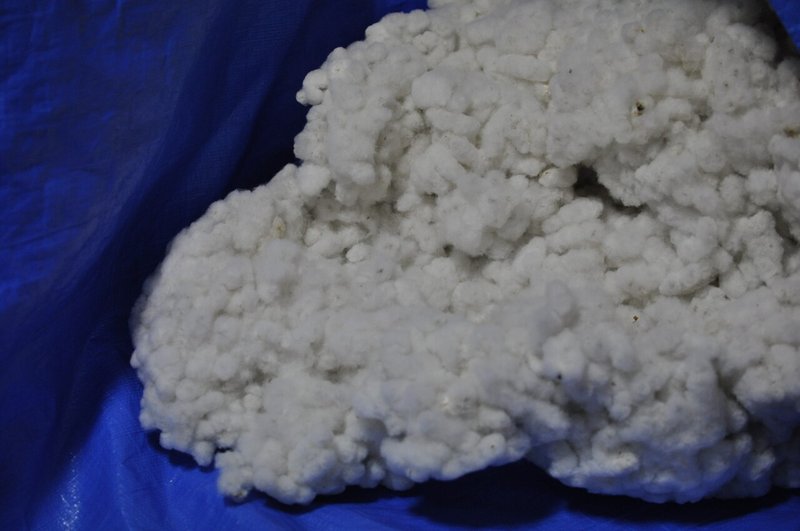
Everyone takes part in planting the cotton seeds that were harvested last year.
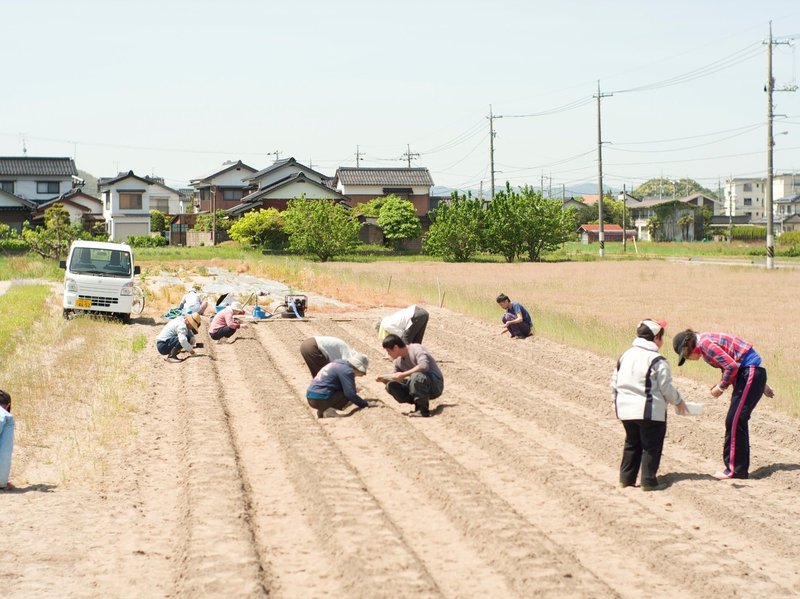
In mid-May, the seeds are planted.
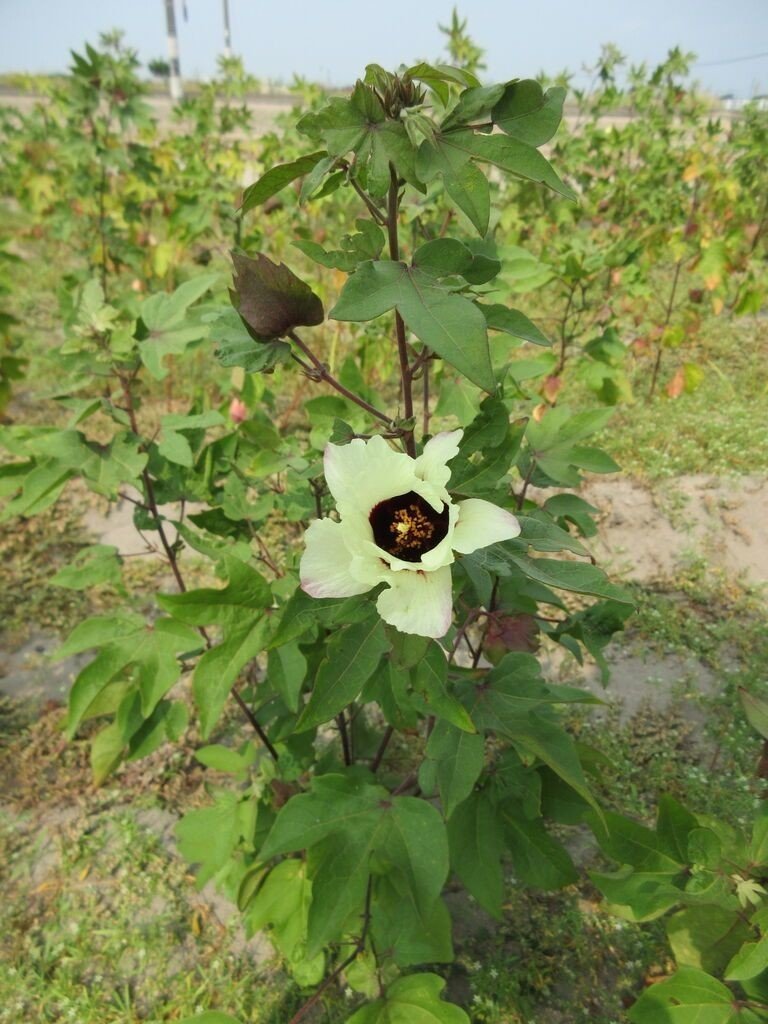
From the seeds, charming white flowers bloom in summer.

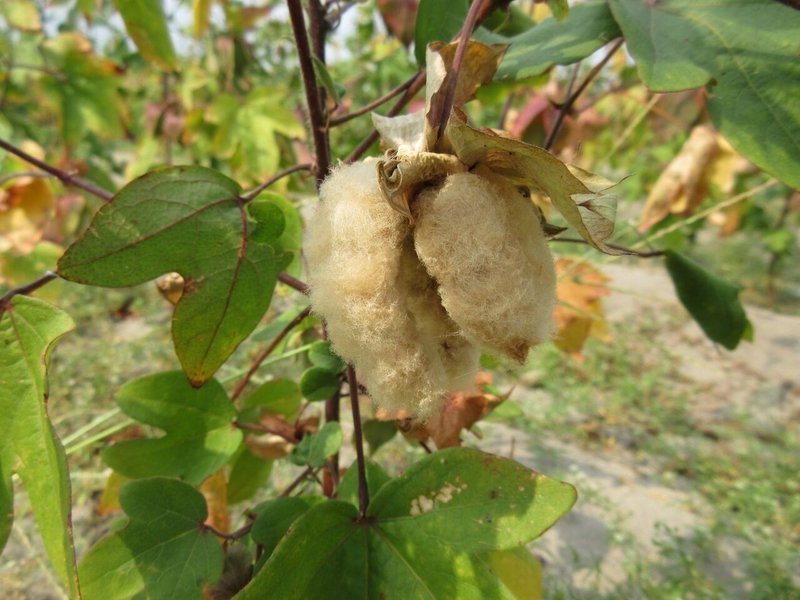

Harvest begins in September when the brown and white cotton burst open.
鳥取県の弓ヶ浜(ゆみがはま)半島の地で連綿と栽培されてきた地の綿、伯州綿の棉畑。今年は収量が少なかったようですので貴重な伯州綿がどのように変化するか楽しみにしています。おりもんやの製品は全てがこの伯州綿で出来ているわけではなく、綿を中心に紡績糸も使用し、製品のアクセントとして伯州綿を使用しています。
Our Hakushu cotton field is located on the Yumigahama Peninsula in Tottori Prefecture, where cotton has been cultivated for generations. Since the yield was low this year, I look forward to seeing that change for the better. Not all of our products are made from Hakushu cotton. We mainly use spun cotton and add our Hakushu cotton as an accent.

畑から採取した伯州棉から種を取り、糸にする為に手作業で綿を紡ぎます。
伯州綿は一般的な洋綿と比較すると繊維が短いために糸撚りの機械に向かない為、昔ながらの手回しの糸括り機で糸にします。
機械で撚られた糸は均一な太さで仕上がり、ムラが出にくい利点がありますが織りあがった製品は個人的な意見ですが手織りと比較して面白みに欠けるように感じます。おりもんやの撚られた糸はポコポコと凹凸があり織りあがった時にとても楽しい布に仕上がります。伯州綿100%で織られた布地を手の平に乗せるとすぐに体温と馴染んで温めてくれます。寒い季節に首元に巻くと本当に暖かく、とても愛おしい気持ちになります。伯州綿には油分を含んでおりますので汚れが付きにくいという特徴があります。
Hand-spun Hakushu Cotton Yarn
After harvesting the Hahushu cotton seeds, the yard is spun by hand. Hakushu cotton has shorter fibers than Western cotton. This makes it unsuitable for modern machine production. So, we continue to use old-fashioned, hand-cranked machines.
Machine-produced yarn has the advantage of having even thickness and smoothness. However, I feel that hand-spun yarn produces more interesting results. Orimonya's twisted hand-spun yarn has a unique, uneven texture that creates fabric with very playful textures. As soon as you feel 100% Hakushu cotton fabric on the palm of your hand, you get a warming sensation. This fabric makes a really comfy, cozy neck warmer in the cold season. Another great feature is that Hakushu cotton contains oil, making it resistant to stains.

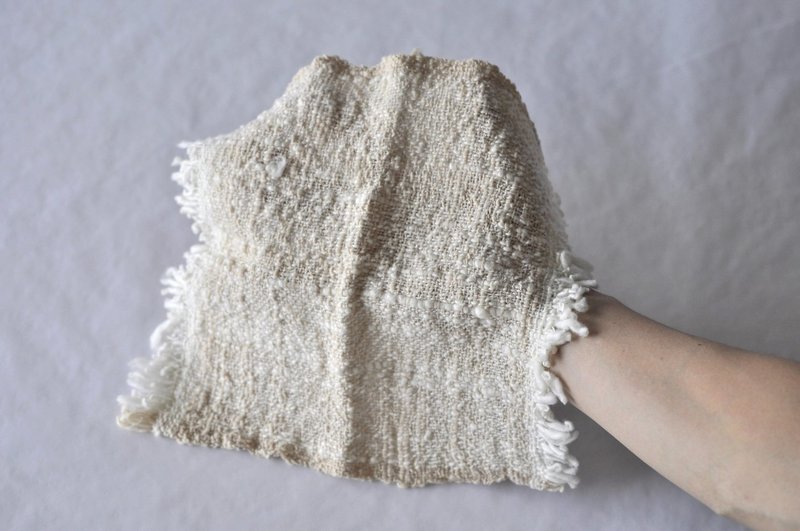
A handkerchief hand-spun and hand-woven from 100% Hakushu cotton.
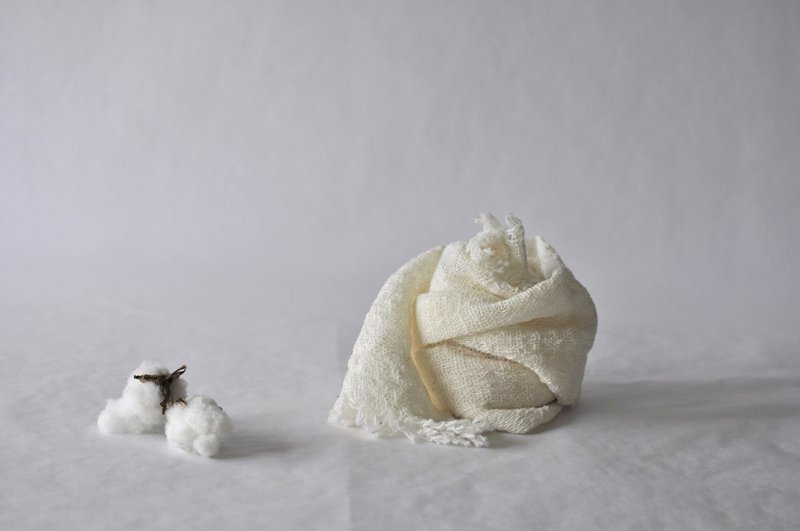
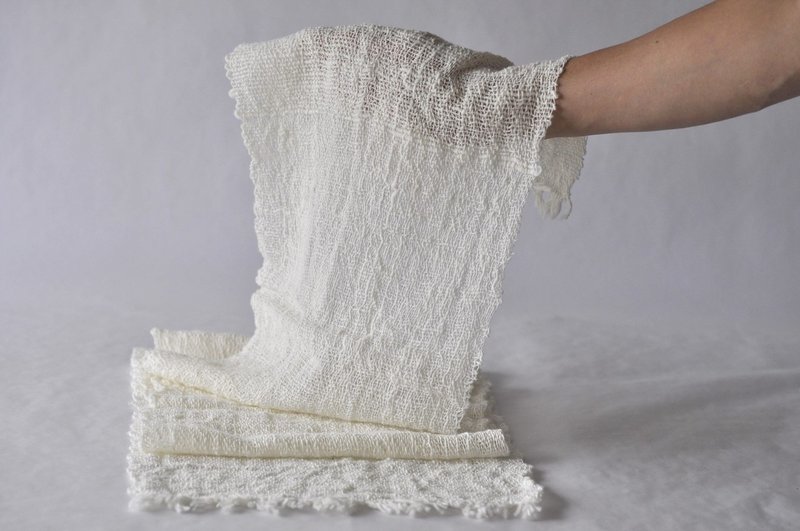
A scarf hand-spun and hand-woven from 100% Hakushu cotton
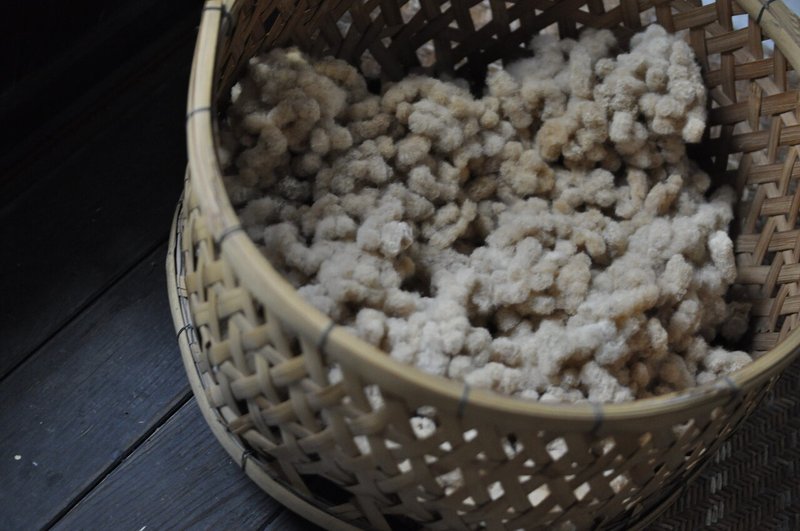
Hakushu cotton seeds for next year's planting. I'm looking forward to seeing what kind of products the harvested cotton will become.
草木染め作業
手紡ぎの糸や紡績糸を工房の近くで採取した植物で草木染めします。木々や木の実、草花などを染料として草木染めにします。藍染めは島根県の青戸紺屋さんへお願いして本藍染めにて染めています。
Plant Dye Preparation
Hand-spun yarn and pre-spun yarn are dyed with plants collected near the workshop. We use trees, nuts, and flowers to make natural dyes. The indigo dyeing is done by Aoto Dye Workshop in Shimane Prefecture.

Photo of dyed yarn before it is woven

機織り機に糸をセットして織り始まるまでに幾重にも細かい作業が必要とされます、これら全て手作業にておこなわれています。
Many detailed steps are necessary before the yarn is set on the loom and weaving begins, all of which are done by hand.
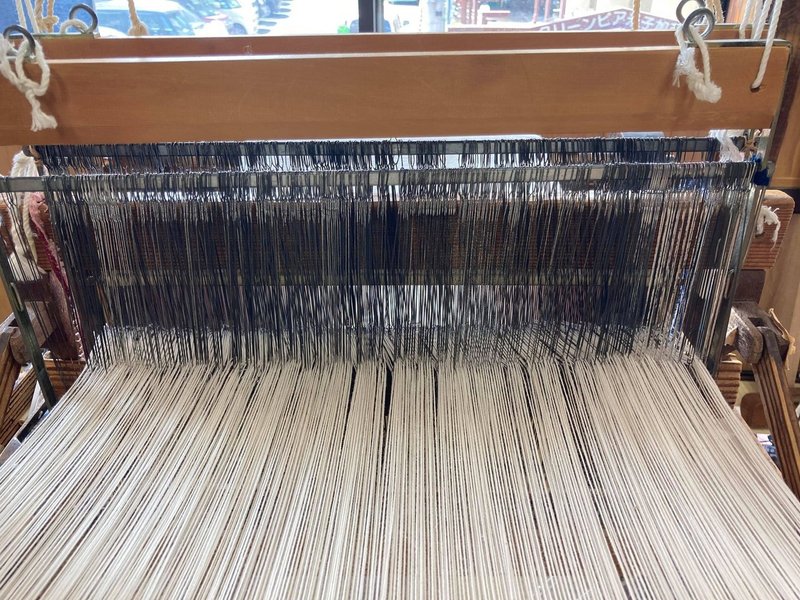
After countless warp threads are stretched on the loom, the weft is finally added, and the weaving begins.

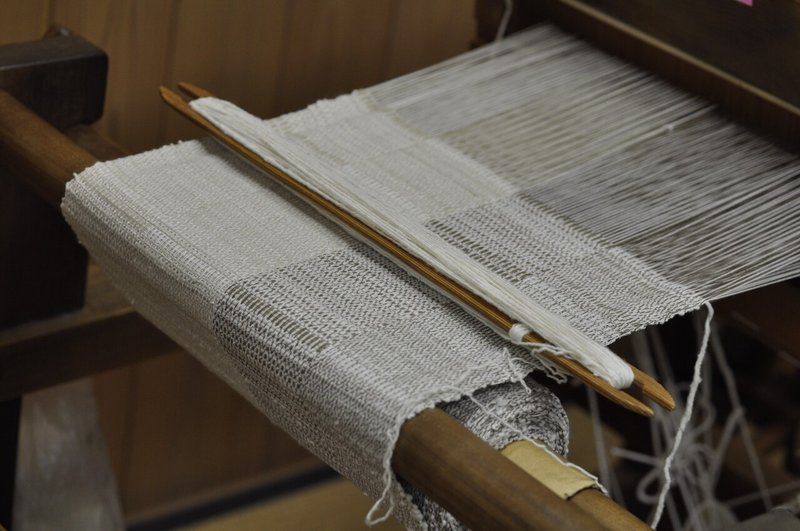
手織りは機械織りと比較すると作業スピードは劣り、均一にムラなく織り上げるという確実性に欠点がありますが、手織り本来の手触りや質感、製品に仕上がると軽やかな仕上がりになります。一人一人作業のペースは違いますし、織り手それぞれの特徴や癖がありますので製品になったものは同じ商品でも一つ一つ表情があり、とても和やかな気持ちにしてくれます。いつも工房に伺うと感じるのですが、織り手の方やスタッフのみなさんの優しい雰囲気が製品にも現れていて、使い込む程に愛おしい気持ちにしてくれる、そんな力を感じます。自然素材で織られた材料で染料もこの土地で育った植物から染められ、人の手により丁寧に織り上がった布地だから、目で見ても手に触れても部屋に新しく迎え入れても違和感を感じることがないのでしょう。織りあがった布地はジャケットやパンツ、バックや小物など多種にわたり製品へと仕上がります。
Hand-weaving takes more time and has a less uniform texture than machine weaving. However, hand-woven fabric has a unique texture and soft finish. Each weaver works at their own pace and has their own characteristics and habits. So, each textile has its own unique expression, giving us a very peaceful feeling. Whenever I visit the workshop, I feel that peaceful atmosphere. The calmness of the weavers and staff is reflected in the products. The more you use them, the more you love them. The textiles are woven from natural materials, the dyes are dyed from plants grown in the area, and the fabric is carefully woven by human hands. So, you feel completely natural when you see it, touch it, and take a new textile home.
The woven fabric is made into a wide variety of products such as jackets, pants, bags, and accessories.
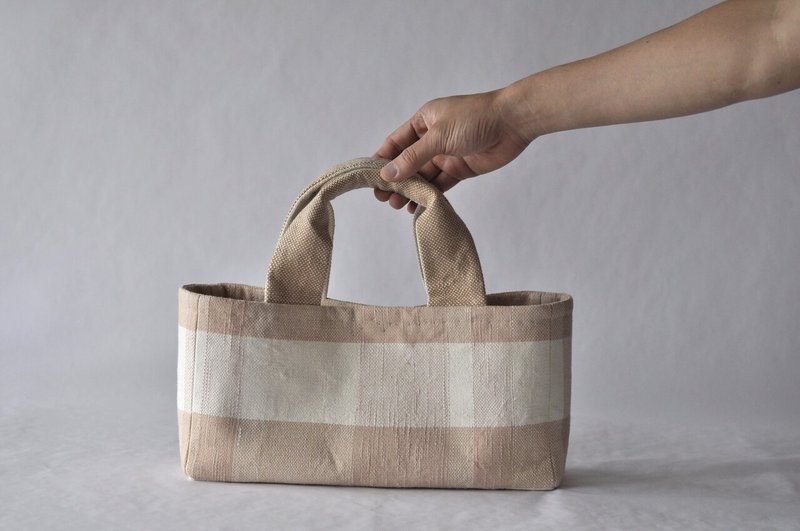
Bag with Handle

Azuma Bag
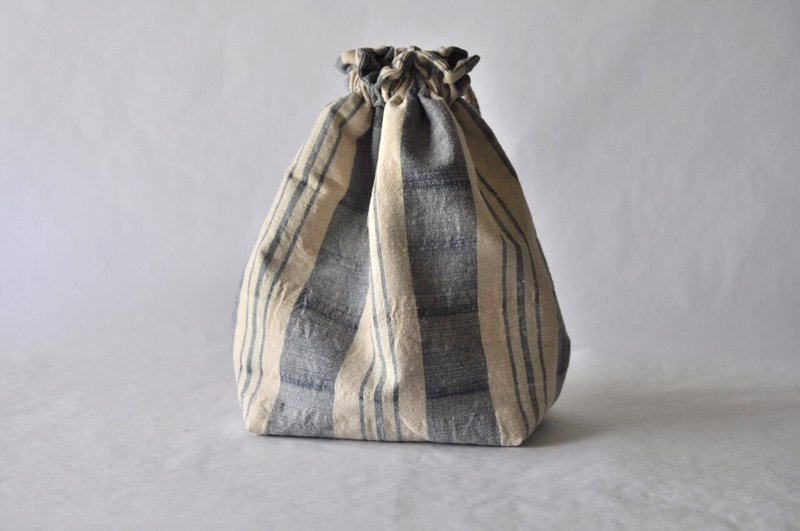
Purse
結び織りノッティング(椅子敷|座布団)
結び織りノッティングは柄を考案するところから始まります。紺の部分は本藍染で染め上げた糸を使用しています。手作業で一つ一つ丁寧に結び織られていきます。上記の動画で作業風景をご確認ください。
knotting (Chair Cushion/Floor Cushion)
Knotting begins with thinking about the pattern. The navy blue part uses thread dyed with natural indigo. Each piece is carefully tied and woven by hand. Check out the work in progress in the video above.
・椅子敷きは綿100%で出来ておりますので季節問わずオールシーズン使えます。毛足が長いので弾力性もあり長年の使用に十分な耐久性があります。
・洗うときはタライにお湯を張って洗濯洗剤を入れ、椅子敷きを浸します、その後ブラシで表と裏面を縦横にブラッシングしてお湯ですすいだ後、脱水機にかけて陰干ししてください。
・藍染めや草木染めは直射日光が当たり続けると退色しますので日陰干ししてください、また車の座席など日光が当たる場所で使用することは避けてください。
Floor Cushion Care Instructions:
-The chair cushion is made of 100% cotton. It can be used all year round. The long bristles make it elastic and durable enough for many years.
・When washing, fill a tray with hot water, add laundry detergent, and soak the chair cushion. Brush the front and back sides vertically and horizontally with a brush, rinse with hot water, and then hang it in front of a dehumidifier to dry in the shade.
- Indigo-dyed and naturally dyed products will fade if exposed to direct sunlight, so please dry them in the shade and avoid using them in areas exposed to sunlight, such as car seats.
|お問い合わせ先|
COCOROSTORE
〒682-0821 鳥取県倉吉市魚町2516
0858-22-3526
HP:https://cocorostore.jp
当店取扱い商品:NPO法人おりもんや
この記事が気に入ったらサポートをしてみませんか?
